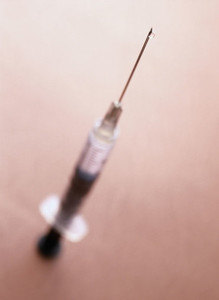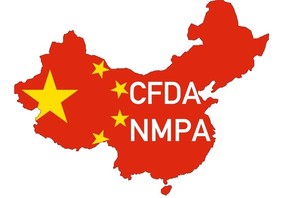The new regulations will provide a legal framework for patients to report adverse events to their national medicines authority, and a legal obligation for the systematic tracking of medicines from manufacturer to patient. The legislation recognises that biosimilars, and other biological medicinal products, present distinctive safety challenges and aims to guarantee their traceability after they have been dispensed, through the provision of product information and identification. According to a briefing by Professor Burkhard Sträter, Bonn, Germany, the new requirements will have a significant impact on Member States, physicians, pharmacists and pharmaceutical companies [1].
Biosimilars are large biological molecules (up to 200 amino acids) whose manufacturing process is more complex than that for small molecule generics. As a result, biosimilars cannot be assumed to have an identical safety profile to the originator. So far, EMA has centrally approved 14 biosimilars for marketing in Europe. These include the first approved biosimilar Omnitrope (somatropin), for the treatment of growth hormone deficiency, and Tevagrastim (filgrastim) and other similar products for the treatment of cancer. Monoclonal antibodies are the next major class of biosimilars that will begin appearing on the market once their patents expire.
In many European countries pharmacists are permitted to do automatic substitution of small-molecule generic medicinal products. Automatic substitution is a practice whereby pharmacists can substitute the brand-name product specified by the prescribing physician with an alternative product. However, this is not the case for biosimilars. In January 2011, for example, the European biopharmaceuticals enterprises called for European and national prescribing/dispensing guidelines to advise physicians and pharmacists that automatic substitution should not apply to biological medicines including biosimilars [2].
Underscoring the importance of the new regulations is the case of a transient increase, between the years 1998 and 2003, in the number of patients developing the condition of pure red cell aplasia (PRCA) while receiving epoetin alfa (recombinant human erythropoietin) [3]. Due possibly to its formulation and SC route of delivery the drug appeared to have become more immunogenic, causing some patients to develop antibodies against both the drug and their own native erythropoietin, with a depletion of red cell precursors in their bone marrow [4, 5]. Reformulation and a switch to IV delivery then helped to reduce the incidence of PRCA.
The new EU legislation means closer post-market surveillance of medicinal products. The new Regulation (EC) 1235/2010 tightens provisions for centrally authorised medicinal products, which include biosimilars [6]. Directive 2010/84/EU revises reporting and general requirements on adverse events for products authorised both nationally and centrally [7].
With regard to Regulation (EU) No. 1235/2010, Recital 17, in particular, deals with biosimilars. It recognises the risks associated with biosimilars and puts these products in the same class as new substances. This means that manufacturers must include a ‘black symbol’ in the product information. Furthermore, Article 23 of Regulation (EU) No. 1235/2010 calls for the establishment and maintenance of a public list of medicinal products that are subject to additional monitoring. This covers biosimilars as ‘any biological medicinal product’ authorised after 1 January 2011.
Reporting adverse events
With regard to the reporting of adverse events, Directive 2010/84/EU now amends Article 102 of the medicinal products Directive 2001/83/EU, by requiring that Member States record the name and batch number of any dispensed medicinal product. This is to ensure ‘that all appropriate measures are taken to identify clearly any biological medicinal product prescribed, dispensed, or sold in their territory which is the subject of an adverse reaction report.’
In this way, it should be possible to determine which product a patient has taken before suffering an adverse event, and not only which active substance the medicine contained.
Physicians, pharmacists and other healthcare professionals will be subject to ‘specific obligations’ in order to comply with Article 102 of Directive 2010/84/EU. Doctors are required, therefore, to maintain accurate records of prescribing and dispensing, so that if a pharmacist does make a substitution, and the patient has an adverse event, it will be possible to trace the product responsible.
Article 102 of Directive 2010/84/EU has consequences too for pharmaceutical companies, who must now include warnings that their product information only applies to a specifically named biological medicinal product. The warning should include that ‘changing to any other biological medicinal product should be authorised by the prescribing physician who should document the name of the product prescribed for pharmacovigilance reasons.’
On 20 February 2012, EMA published the drafts of the first seven modules of its guidelines on good pharmacovigilance practices, including Module 6 on ‘management and reporting of adverse reactions to medicinal products’ [8]. A further nine modules are expected. These are intended to support marketing-authorisation holders, EMA and medicines regulatory authorities in EU Member States, in implementing the new pharmacovigilance legislation. These are now open to public consultation, with a deadline of 18 April 2012 for the submission of comments.
So far, the manufacturers of the approved biosimilars Retacrit (epoetin zeta), Nivestim (filgrastim) and Silapo (epoetin zeta) have added wording relating to biosimilars in their summary of product characteristics section 5.1.
In the meantime, pharmaceutical companies are working to improve patient safety. For example, generics company Hospira is applying bar codes to all injectable drugs and IV solutions, and incorporating bar code-reading technology into several infusion devices, in order to help ensure that patients receive the right dose of the right medicine. In 2010, Hospira was licensed to produce Retacrit (epoetin zeta) as the first biosimilar for both SC and IV delivery for the treatment of renal anaemia [9].
The peer reviewed version of this article is published in GaBI Journal, 2012, Issue 2. Click here to view the article.
Related articles
Practical guidance on new pharmacovigilance legislation
Pharmacovigilance legislation moves a step closer
References
1. Sträter B. New pharmacovigilance rules in the EU and their impact on biosimilars and automatic substitution. Scrip Regulatory Affairs. 10 Nov 2011.
2. EBE Position paper, Recommendations on the use of biological medicinal products: substitution and related healthcare policies. 26 Jan 2011.
3. GaBI Online - Generics and Biosimilars Initiative. Epoetin alfa and pure red cell aplasia [www.gabionline.net]. Mol, Belgium: Pro Pharma Communications International; [cited 2012 Apr 6]. Available from: www.gabionline.net/Biosimilars/Research/Epoetin-alfa-and-pure-red-cell-aplasia
4. Jelkmann W. Biosimilar epoetins and other ‘follow-on’ biologics: update on the European experiences. Am J Hematol. 2010;85:771-80.
5. Praditpornsilpa K, Tiranathanagul K, Kupatawintu P, et al. Biosimilar recombinant human erythropoietin induces the production of neutralizing antibodies. Kidney Int. 2011;80(1):88-92.
6. Regulation (EU) No. 1235/2010. 15 Dec 2010
7. Directive 2010/84/EU. 15 Dec 2010.
8. GaBI Online - Generics and Biosimilars Initiative. EMA released pharmacovigilance guidelines for public consultation [www.gabionline.net]. Mol, Belgium: Pro Pharma Communications International; [cited 2012 Apr 7]. Available from: www.gabionline.net/Guidelines/EMA-released-pharmacovigilance-guidelines-for-public-consultation
9. Retacrit to be the first biosimilar to achieve subcutaneous licence in renal patients. Hospira press release. 9 Feb 2010.
Permission granted to reproduce for personal and educational use only. All other reproduction, copy or reprinting of all or part of any ‘Content’ found on this website is strictly prohibited without the prior consent of the publisher. Contact the publisher to obtain permission before redistributing.








 0
0











Post your comment